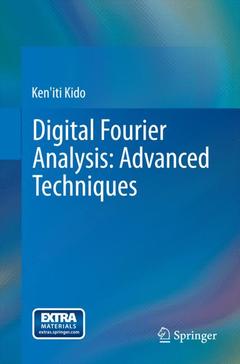Description
Digital Fourier Analysis: Advanced Techniques, 2015
Language: Japanese
Description
/li>Contents
/li>Biography
/li>Comment
/li>
This textbook is a thorough, accessible introduction to advanced digital Fourier analysis for advanced students. Assuming knowledge of the Fast Fourier Transform, this book covers advanced topics including the Hilbert transform, cepstrum analysis and the two-dimensional Fourier transform.
Saturated with clear, coherent illustrations, "Digital Fourier Analysis: Volume 2" includes practice problems and thorough Appendices. As a central feature, the book includes interactive applets (available online) that mirror the illustrations. These user-friendly applets animate concepts interactively, allowing the user to experiment with the underlying mathematics. The applet source code in Visual Basic is provided online, enabling advanced students to tweak and change the programs for more sophisticated results.
A complete, intuitive guide, "Digital Fourier Analysis, Volume 2" is an essential reference for students in science and engineering.




